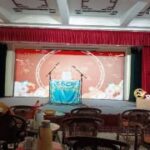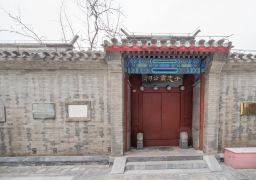The Tang Xianzu Memorial Hall is situated at No. 4, North Street, Suichang County, covering an area of 900 square meters. Comprising a front courtyard, the main hall, and a rear garden, it boasts a beautiful environment with an elegant and simple charm. The exhibition within is rich in content and refined in style, focusing on the life of Tang Xianzu, his political achievements in Suichang, and his artistic accomplishments. Tang Xianzu (1550-1616), styled Yisheng and also known as Hairuo, Ruoshi, and Qingyuan Daoren, was a renowned literary figure and dramatist of the Ming Dynasty from Linchuan, Jiangxi. He served as the county magistrate of Suichang from 1593 to 1598 during the Wanli era of the Ming Dynasty. Known for his diligent governance and love for the people, he promoted education, encouraged agriculture, eradicated tigers, and removed hazards, achieving remarkable political success. His works ‘The Purple Hairpin’, ‘The Resurrection’, ‘The Southern Branch’, and ‘Handan Dream’ are outstanding in the legends of the Ming Dynasty and collectively referred to as the ‘Four Dreams of Linchuan’. Among them, ‘The Resurrection’ is particularly famous and influential, with its distinctive character portrayals and lively language. His representative work ‘The Peony Pavilion’ has been celebrated in literary circles for centuries and is known overseas, earning him the title of ‘the Eastern Shakespeare’. Tang Xianzu’s theories on opera composition emphasize ‘interest, spirit, and color’, while in poetry and prose, he advocates ‘natural spirit and energy’. He holds an important place in the history of Chinese literature. Memorial halls dedicated to him are established in Fuzhou, Jiangxi, Suichang, Zhejiang, and his hometown of Linchuan. The hall is open all year round from Tuesday to Sunday, 08:30 to 17:00; closed all day on Mondays.
Service facilities include a scenic map available at: https://mp.weixin.qq.com/s/j4P9c2g0RA2ALsU_8PgN9Q
Key Tips:
1. To ensure the safety of cultural relics, the quality of visits, and a tranquil environment, the hall limits daily visitors to 600 people, with 300 in the morning and 300 in the afternoon.
2. Individuals with improper attire, those promoting small goods, distributing advertisements, carrying pets, being intoxicated, or suffering from mental illnesses are not allowed to visit. It is strictly forbidden to bring flammable and explosive materials, controlled weapons, corrosive items, and other dangerous goods, as well as drinks, food, and items that may pollute the exhibition environment into the hall. Smoking and open flames are strictly prohibited within the premises.
3. Do not bring large items into the hall; small personal items can be stored for free, and valuables should be carried with you at all times.
4. Individuals without or with limited behavioral capacity without a guardian are not allowed to visit; children under 1.2 meters in height and elderly people with limited mobility must be accompanied by an attendant.
Five, please observe the rules of civility. Loud noise, chasing, fighting, climbing, and lying down are prohibited inside the memorial hall as they are detrimental to the appearance and image. Visitors are expected to maintain silence and order during their visit.
Tang Xianzu Memorial Hall
The Tang Xianzu Memorial Hall is situated at No. 4, North Street, Suichang County, covering an area [...]









